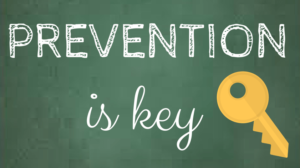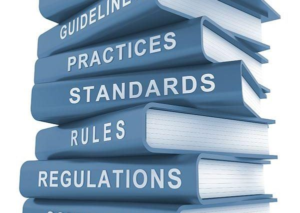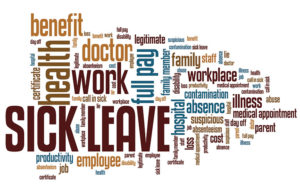Tracy Emmerich | February 4, 2021

During the current COVID-19 pandemic, every day brings new information, concerns, and challenges regarding the spread of the virus, its economic and social impacts, and government directives. Leap Solutions remains dedicated to keeping you informed and empowered by delivering relevant, up-to-the-minute information and resources.
Our organizational development specialists are here to help support you with your online strategic planning, team development, executive coaching, training, program evaluation, and community engagement. Essentially, we can convert anything that you need in support of your business to a virtual experience. You still want to accomplish your plans, goals, and outcomes. We are here—virtually to help you achieve them.

The coming of a new year means the coming of new California employment and labor laws. As always, Leap Solutions is here to help you face them proactively and confidently. Our HR professionals have the knowledge, expertise, and resources to inform and guide you through ever-changing legislation and empower your company to thrive in 2021 and beyond.
Our Newsletter will cover:
- Families First Coronavirus Response Act (FFCRA)
- AB 685 Workplace Safety (Effective January 01, 2021)
- Written COVID-19 Prevention Program (November 20, 2020)
- SB 1383 Expands California Family Rights Act (CFRA) (Effective January 01, 2021)
- Mandatory Sexual Harassment Training (Effective January 01, 2021)
- Minimum Wage and Salary Requirements for Exempt Employees (Effective January 01, 2021)
- Paid Family Leave (Effective January 01, 2021)
- Agriculture under Wage Order 14 (Effective January 01, 2021)
- Additional Handbook Policies to Review
Families First Coronavirus Response Act (FFCRA)
The Families First Coronavirus Response Act (“FFCRA”) expired December 31, 2020. The FFCRA applied to employers with 500 or fewer employees and provided workers emergency paid sick leave because of the COVID-19 pandemic. The Department of Labor recently confirmed that employers are not required to provide employees with FFCRA leave after December 31, 2020, but may voluntarily decide to provide employees such leave. Congress also extended employer tax credits for paid sick leave and the expanded family and medical leave for voluntary use through March 31, 2021. It is important that employers have a way to document the sick and leave under FFCRA to receive the payroll credits.

AB 685 Workplace Safety
(Effective January 01, 2021)
AB 685 expands employee COVID-19 protections by requiring employers to provide notice of a “potential exposure” to COVID-19 within one business day. The notice should go to all employees and employers of subcontracted employees (and employee-representatives) who were at a worksite within the infectious period who may have been exposed to the virus. The notice must be written in a manner typically used to communicate to all employees, employers of subcontracted employees, and employee representatives (e.g., unions), in the form of a letter, email, or text message, but only if employees anticipate receiving communication from the employer in this manner. The notification must be in writing and a phone call will not satisfy this requirement. Also, written communication should be in English and the language understood by the majority of the employees.
The notice must contain:
- Information regarding COVID-19 related benefits that employees may receive, including paid sick leave, workers’ compensation, and anti-retaliation protections
- Company’s disinfection protocols and safety plan to eliminate any further exposures
Companies are also required to notify California’s Department of Public Health if there are sufficient COVID-19 positive cases that meet the definition of a COVID-19 outbreak.

Written COVID-19 Prevention Program
(November 20, 2020)
The Occupational Safety and Health Standards Board (Cal/OSHA) adopted comprehensive and complex COVID-19 emergency regulations directing employers to address a variety of issues related to COVID-19 in the workplace including establishing and implementing a written COVID-19 Prevention Program (CPP) detailing the systems and protocols in place for mitigating and responding to COVID-19 infections in the workplace. This program can be integrated into the employer’s existing Injury and Illness Prevention Program (IIPP) or can be a stand-alone document. There are 11 sections the program must address. If your workplace regularly receives customers, clients, patients or visitors, make sure your COVID-19 plan covers workplace violence in in the response plan. Contact Leap Solutions if you need help writing your plan.
SB 1383 Expands California Family Rights Act (CFRA)
(Effective January 1, 2021)
SB 1383 reduces the number of employees required for the California Family Rights Act (“CFRA”) to apply to employers with five (5) or more employees; a significant reduction from the old standard, which was fifty (50) or more employees. The updated CFRA offers employees 12-weeks of unpaid job protected leave and repeals The New Parent Leave Act (“NPLA”). CFRA also expands the definition of “family member” to include a child (of any age) of a domestic partner, grandparent, grandchild, sibling, or domestic partner. It is important to modify existing policies and procedures to provide for CFRA leaves of absence. CFRA can be complex with specific employee notice requirements that must be properly implemented. For a company with 50 or more employees who has already been covered under CFRA (and FMLA), revisions should be made to existing FMLA/CFRA leave policies to incorporate these revisions to CFRA.
Mandatory Sexual Harassment Training
(Effective January 1, 2021)
Employers with five or more employees are required to have provided two hours of sexual harassment training to supervisors and one hour to non-supervisorial employees within six months of hire or promotion, and employers must continue this training every two years thereafter. Temporary and seasonal employees will be required to be trained within 30 days of hire or 100 hours worked, whichever is earlier.
Minimum Wage and Salary Requirements for Exempt Employees
(Effective January 1, 2021)
The minimum monthly salary requirement for exempt executive, administrative, and professional employees is no less than two times the state minimum wage for full-time employment. It is based on the current state minimum wage, not any applicable local minimum wage. Accordingly, January 1, 2021 minimum salary threshold for these exemptions is as follows:
- For employers with 25 or fewer employees, the state minimum is $13 per hour. Accordingly, the minimum monthly salary test for these exemptions is $4,506.67 per month ($54,080 per year).
- For employers with 26 or more employees, the state minimum wage is $14 per hour. Accordingly, the minimum monthly salary test for these exemptions is $4,853.33 per month ($58,240 per year).

Paid Family Leave
(Effective January 1, 2021)
California’s Paid Family Leave (PFL) offers employees wage replacement through EDD program is expanded to include payments for time off for “qualifying exigencies” related to a family member’s military service. Benefits will be available if employees take time off for activities related to the covered active-duty status of their spouse, registered domestic partner, child, or parent who is a member of the U.S. Armed Forces. Called “qualifying exigencies,” these activities might include such things as official military ceremonies; briefings; changes to child care or financial or legal arrangements as a result of military service; counseling; or spending time with the covered servicemember during rest and recuperation leave.
Beginning July 1, 2020, PFL benefits were extended to a maximum of eight weeks in a 12-month period.

Agriculture under Wage Order 14
(Effective January 1, 2021)
Agricultural employers under Wage Order 14 with 26 or more employees are subject to a series of phased-in overtime changes. Agricultural employers with 25 or fewer employees remain covered by the old rules but will begin phased-in overtime changes in 2022. Agricultural employers with 26 or more employees will now pay time and one-half for hours worked more than 8.5 per day or 45 per week. On the seventh consecutive day of work in a workweek, agricultural employees are entitled to time and a half for the first eight hours and double-time after eight hours. It is important employers designate their workweek. If a workweek is not designated, the law presumes a workweek of 12:01 a.m. Sunday to midnight Saturday. In addition, the day of rest requirement does not apply when hours worked do not exceed 30 in any workweek or six in any workday. The exception for employees working shifts of six hours or less only applies to those who never exceed six hours of work on any day of the workweek.

Additional Handbook Policies to Review
Due to the coronavirus pandemic, many employer practices may have changed, which might warrant employee handbook updates. Ensure your written documents match your practices.
Victims of Crime or Abuse
- Expands the prohibition on discrimination and retaliation against employees who are victims of crime or abuse when they take time off for judicial proceedings or to seek medical attention or related relief for domestic violence, sexual assault, stalking or other crime that causes physical or mental injury.
Paid Leave
- Review how paid leave policies may have changed due to COVID-19.
- Review time-off request procedures to indicate when time off can be required by the employer should sick employees need to be sent home (paid or unpaid).
- Review Kin Care to clarify that employees have the right to designate sick leave as kin care or not.
Attendance/Scheduling
- Update to reflect relaxed attendance policies to encourage sick employees to stay home.
- Update attendance or scheduling policies to be more flexible for parents with child care challenges, or employees with other caregiver issues related to COVID-19.
Safety
- Physical distancing practices detailed to support a safe workplace.
- Employee health screening policies including temperature taking and the confidential handling processes of resulting records.
- Added policy and procedures for employees to report and how the employer will handle a positive COVID-19 case at the worksite.
- Procedures implemented for employee quarantine requirements due to symptoms or positive test results, including return-to-work procedures (two negative tests, 10 days after symptoms are gone, doctor’s note, etc.).
- Contact tracing practices implemented to help contain the spread of infection.
- Visitor policies updated with health screening practices.
Travel
- Travel policies updated to reflect essential versus nonessential travel and the impact of domestic or global travel restrictions.
- Quarantine policies added to address both business and personal travel, including pay arrangements when telecommuting is not possible.
Telecommuting
- Telecommuting policies updated to reflect the type of work or specific positions that are able to be done remotely and the procedures for requesting telework.
- Added or updated policies on which telecommuting-related costs the employer will or will not cover.
Technology
- Information technology policies revised to reflect remote work hardware, software, and support.

***
Leap Solutions is a diverse group of highly skilled management, organizational development, and human resources, and executive search and recruitment professionals who have spent decades doing what we feel passionate about helping you feel passionate about what you do. Our HR specialists can help you get a handle on the ever-changing COVID-19 guidelines, programs, and legislation that may impact you and your employees. We are available to work with you to develop practical solutions and smart planning decisions for your organization’s immediate, near, and long-term needs.
To print this article, click here


Scott Ormerod | March 20, 2020

On March 18, 2020, President Trump signed legislation extending paid sick leave and paid family leave benefits to millions of Americans to slow the spread of the COVID-19 pandemic. This legislation contains the Emergency Paid Sick Leave Act and the Emergency Family and Medical Leave Expansion Act, both of which become effective on April 2, 2020. The Act applies to employers with 1 to 499 employees. Employers with 500 or more employees do not have to comply with this law. The Act expires on December 31, 2020.
The Act covers numerous activities including free testing for the virus, unemployment aid, nutritional programs, paid sick leave, and changes to FMLA. We will cover in detail the leave sections of the Act.
Emergency Paid Sick Leave Act
The Emergency Paid Sick Leave Act mandates that covered employers nationwide provide two weeks of paid sick leave to employees.
Coverage
Employers with fewer than 500 employees are required to provide paid sick leave in accordance with the new law. Small businesses with fewer than 50 employees are exempt, however, if providing sick leave would “jeopardize the viability of the business.” The Secretary of Labor has been tasked with issuing regulations explaining how and under what circumstances that standard is met, although guidance on the subject has not yet been offered.
Eligibility and Permissible Uses
Employees are entitled to use paid sick leave under the following circumstances, regardless of how long they have been employed:
- The employee is subject to a Federal, State, or local quarantine or isolation order related to COVID-19.
- The employee has been advised by a health care provider to self-quarantine due to concerns related to COVID-19.
- The employee is experiencing symptoms of COVID-19 and is seeking a medical diagnosis.
- The employee is caring for an individual who is subject to an order as described in subparagraph (1) or has been advised as described in paragraph (2), above.
- The employee is caring for a son or daughter whose school or place of care has been closed, or whose child care provider is unavailable, due to COVID-19 precautions.
- The employee is experiencing any other substantially similar condition specified by the Secretary of Health and Human Services in consultation with the Secretary of the Treasury and the Secretary of Labor.
Notably, if an employee is a healthcare provider or first responder, the employer may elect to exclude the employee from these sick leave benefits.
An employee may not be required to use other forms of paid time off before using paid sick leave under the Emergency Paid Sick Leave Act, nor may an employer require that an employee find coverage as a condition of providing sick leave.
Amount of Leave
Full-time employees are entitled to 80 hours of paid sick leave. Part-time employees are entitled to paid sick leave in an amount equal to the hours that particular employee works, on average, over a two-week period.
The benefit is available to any employee no matter how long they have been employed. Note that the calculations are based on an employee’s “regular rate” as defined by the FLSA, which may be greater than an employee’s base hourly rate if they also are paid certain types of additional compensation.
TABLE 1: Eligibility, Permissible Uses, and Compensation Owed
| Covered Reason For Leave |
Rate of Pay |
Cap on Payments |
| (1) The employee is subject to a Federal, State, or local quarantine or isolation order related to COVID–19 |
The employee’s regular rate of pay (as determined under section 7(e) of the Fair Labor Standards Act of 1938 (29 U.S.C. 207(e)). |
$511 per day and $5,110 in the aggregate |
| (2) The employee has been advised by a health care provider to self-quarantine due to concerns related to COVID–19 |
The employee’s regular rate of pay (as determined under section 7(e) of the Fair Labor Standards Act of 1938 (29 U.S.C. 207(e)). |
$511 per day and $5,110 in the aggregate |
| (3) The employee is experiencing symptoms of COVID–19 and seeking a medical diagnosis. |
The employee’s regular rate of pay (as determined under section 7(e) of the Fair Labor Standards Act of 1938 (29 U.S.C. 207(e)). |
$511 per day and $5,110 in the aggregate |
| (4) The employee is caring for an individual who is subject to an order as described in subparagraph (1) or has been advised as described in paragraph (2). |
Two-thirds of the employee’s regular rate of pay. |
$200 per day and $2,000 in the aggregate |
| (5) The employee is caring for a son or daughter of such employee if the school or place of care of the son or daughter has been closed, or the child care provider of such son or daughter is unavailable, due to COVID–19 precautions. |
Two-thirds of the employee’s regular rate of pay. |
$200 per day and $2,000 in the aggregate |
| (6) The employee is experiencing any other substantially similar condition specified by the Secretary of Health and Human Services in consultation with the Secretary of the Treasury and the Secretary of Labor. |
Two-thirds of the employee’s regular rate of pay. |
$200 per day and $2,000 in the aggregate |
- Unused paid sick leave does not carry over from one year to the next.
- Unused paid sick leave need not be paid out upon separation from employment.
- The employer may not require the employee to search for or find a replacement in order to receive paid sick time under the Act.
- Paid sick time is available for immediate use regardless of how long the employee has been employed.
- The employee may use paid sick time under the Act before using any other accrued paid time off.
- Emergency paid sick time is in addition to any paid time entitlement under the employer’s existing paid time off policy. The employer may not change its paid leave policies on or after the date of the Act’s enactment to avoid providing the additional two weeks of emergency paid sick time.
- Employers who are voluntarily providing paid sick benefits related to COVID-19 public health emergency should contact employment counsel before changing any currently running policies.
Notice
Employers must post, in a conspicuous place a notice promulgated by the Secretary of Labor regarding the requirements of the Emergency Paid Sick Leave Act. A model of such notice must be made available by the Secretary within 7 days of the enactment of the statute. Employers are encouraged to check the U.S. Department of Labor website for a model posting once it becomes available.
Consequences for Violation of Sick Leave Rights
An employer may not discharge, discipline, or discriminate against an employee who takes leave under the Act, files a complaint or institutes any proceeding relating to this Act, or testifies (or is about to testify) in any such proceeding.
Violations of an employee’s right to sick leave under the Emergency Paid Sick Leave Act will be considered violations of the Fair Labor Standards Act’s minimum wage provisions.
Interaction with California State and Local Laws
The Emergency Paid Sick Leave Act specifies that it does not diminish the rights or benefits to which an employee is entitled under any other laws (whether Federal, State, or local), collective bargaining agreements (“CBAs”), or existing employer policies. A critical ambiguity in the law as enacted is whether this provision means that benefits under the Emergency Paid Sick Leave Act run concurrently with existing laws, CBAs, and policies, or whether the new federal benefits are in addition to existing benefits. That is, the statute does not clearly answer whether a full-time employee who is already entitled, for example, to 24 hours of paid sick leave under the California Healthy Workplaces, Healthy Families Act of 2014 is now entitled to a total of 104 hours of paid sick leave (24 hours under California law plus 80 hours under federal law), or only to a total of 80 hours per the federal statute.
Prior proposed versions of the bill specified that the federal benefits were in addition to any benefits already provided by employers (whether on a mandatory or voluntary basis), yet such language was stricken before the Senate’s approval of the final bill. The removal suggests federal sick leave benefits are therefore intended to run concurrently with existing benefits, but employers will likely have to wait for supplemental legislation or regulatory guidance for clarification.
Tax Credits for Sick Leave Wages
Employers may obtain tax credits to ease the financial burden of providing sick leave under the Emergency Paid Sick Leave Act. The tax credit is applied against the employer portion of Social Security taxes. The credit is equal to 100% of the qualified sick leave wages. Such wages are capped at $511 per day if the leave is for the employee’s own care, and at $200 per day if the leave is for caring for a family member, for up to 10 days per employee in each calendar quarter.
Emergency Family and Medical Leave Expansion Act
The Emergency Family and Medical Leave Expansion Act amends the Family and Medical Leave Act (“FMLA”) to add an additional basis for taking job-protected leave. Generally, the FMLA permits eligible employees of covered employers to take unpaid leave because of the employee’s own serious health condition, the serious health condition of the employee’s parent, spouse, or child, to bond with a child newly joining the employee’s family, for qualifying military exigencies, or to care for family members injured in the course of military service.
Coverage and Eligibility
Employers with fewer than 500 employees are covered by the new law and must permit eligible employees to take public health emergency leave. Like the Emergency Paid Sick Leave Act, businesses with fewer than 50 employees may obtain an exemption if providing leave would “jeopardize the viability of the business.”
Unlike the FMLA coverage requirements for other types of leave (employers with 50 or more employees within a 75-mile radius), ALL employers with fewer than 500 employees must grant public health emergency leave to anyone who has been employed for at least 30 calendar days. The usual FMLA requirements that an employee has been employed or at least 12 months and worked 1,250 hours do not apply to public health emergency leave.
The Act creates certain exemptions and exceptions for small employers that would normally be covered by the FMLA and allows health care providers and emergency responders to exclude those employees from leave under the Act.
The Act reserves the right of the Secretary of Labor to promulgate regulations excluding “certain health care providers and emergency responders” from the definition of “eligible employee.”
Duration of Leave and Permissible Use
Under the Emergency Family and Medical Leave Expansion Act, eligible employees can take up to 12 weeks of job-protected leave in a 12-month period if they are unable to work (or telework) due to a need to care for a child whose school or place of care has been closed, or whose child care provider is unavailable, due to the COVID-19 public health emergency.
As with other types of FMLA leave, the employee must provide notice of the need for leave as soon as is practicable.
Compensation Owed
The first 10 days of public health emergency leave may be unpaid. However, an employee may choose to substitute any accrued vacation, personal leave, or medical or sick leave for such unpaid leave under the employer’s policy. The employer may not require the employee to use their paid leave. The remaining 10 weeks of leave must be paid at two-thirds of the employee’s regular rate of pay times the number of hours the employee would otherwise be normally scheduled to work. Qualified family leave wages are capped at $200 per day for each individual and up to $10,000 per calendar quarter. For perspective, the per-day cap would usually kick in for employees making more than $78,000 per year.
Restoration Rights
Unless the employer has fewer than 25 employees, an employee taking public health emergency leave must generally be restored to an equivalent position upon returning from leave. For employers with less than 25 employees, the employer must make reasonable efforts to provide the employee with a position or an equivalent position for 1 year after the “public health emergency” concludes or 12 weeks after commencement of the leave, whichever is earlier.
Sunset Provision
Because the Emergency Family and Medical Leave Expansion Act is intended to address the existing COVID-19 pandemic, eligible employees of covered employers may only take public health emergency leave until December 31, 2020.
Tax Credits for Public Health Emergency Leave
Employers are entitled to a tax credit equal to 100% of the qualified family leave wages under the Emergency Family and Medical Leave Expansion Act.
The Act is not retroactive, which means that any paid time currently being granted would not count toward either FMLA leave or toward the 80 hours of sick leave, nor be eligible for the tax credits.
We encourage you to continue proactively communicating with your employees to keep them abreast of any developments regarding company operations as well as any updates to government programs in support of them and their families. At a minimum, daily communication on emerging issues and developments with your employees will go a long way to provide care and attention to the workforce. This Act will be good news for all your employees, and we suggest you create a brief synopsis of the Act to share with them.
Finally, over the last number of days, we’ve had many questions from clients about some specific areas that are not yet clear based upon the rapid developments both nationally and state-wide. We will keep you informed with additional newsletter releases when the facts become clear. The bottom line, be fair, kind, and considerate of your employees. They are adapting to so much and as employers, your employees need your support.
In the meantime, be safe, take care of yourselves and your families, reach out to us with questions and concerns, and—most importantly—know that we at Leap Solutions Group are here to partner with you to face these unsettling times, work through them with flexibility and resilience, and come out the other side stronger than ever.
Click here to print this newsletter












![]()

